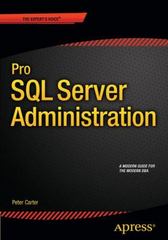Answered step by step
Verified Expert Solution
Question
1 Approved Answer
Bitcoin uses a . Proof of Work ( PoW ) b . Proof of Stake ( PoS ) c . Proof of Burn ( PoB
Bitcoin uses
a
Proof of WorkPoW
b
Proof of Stake PoS
c
Proof of BurnPoB
d
Proof of CapacityPoC
Question
Not yet answered
Marked out of
Not flaggedFlag question
Question text
The blockchain is based on the protocol of
a
central approach
b
consensus approach
c
dependant approach
d
serial approach
Question
Not yet answered
Marked out of
Not flaggedFlag question
Question text
In which Consensus Algorithm,the Validators invest in coins?
a
PoW
b
PoB
c
Delegated PoC
d
PoS
Question
Not yet answered
Marked out of
Not flaggedFlag question
Question text
In which Consensus Algorithm,the coins are 'burned'?
a
PoS
b
PoW
c
PoB
d
PoC
Question
Not yet answered
Marked out of
Not flaggedFlag question
Question text
Sybil Attack is seen in
a
Distributed systems
b
client server systems
c
peertopeer network
d
masterslave network
Question
Not yet answered
Marked out of
Not flaggedFlag question
Question text
What is Hash?
a
bit decimal number
b
hexadecimal number
c
bit decimal number
d
bit hexadecimal number
Question
Not yet answered
Marked out of
Not flaggedFlag question
Question text
Proof of Work functions is
a
Ethereum
b
public key
c
with validators
d
Bitcoin
Question
Not yet answered
Marked out of
Not flaggedFlag question
Question text
The Nakamoto Consensus was created by
a
Bill Gates
b
Satoshi Nakamoto
c
Steve Jobs
d
Alan Turing
Question
Not yet answered
Marked out of
Not flaggedFlag question
Question text
Which consensus algorithm is the least energy efficient?
a
Delegated Proof of Stake DPoS
b
Proof of Authority PoA
c
Proof of Space PoSpace
d
Proof of WorkPoW
Question
Not yet answered
Marked out of
Not flaggedFlag question
Question text
When was Ethereum's genesis block mined?
a
b
c
d
Question
Not yet answered
Marked out of
FlaggedRemove flag
Question text
What are the core components of blockchain architecture?
a
Bitcoin and Cryptocurrency
b
Encryption and Decryption Record
c
Public Key and Private Key Record
d
Node,Transaction, Block
Question
Not yet answered
Marked out of
Not flaggedFlag question
Question text
What is Proof of Burn?
a
Data Burning
b
Burning tokens
c
consensus for burning the tokens
d
check whether burn has occurred or not
Question
Not yet answered
Marked out of
Not flaggedFlag question
Question text
What is the difference between ProofofStake and ProofofWork?
a
PoW is Consensus algorithm while PoS is Consensus Mechanism
b
PoW is used for security while PoS is used for privacy
c
PoW used for data hiding while PoS is used for data cleaning
d
PoW is used in financial transactions while PoS is used in computer network
Question
Not yet answered
Marked out of
Not flaggedFlag question
Question text
Each block of a Blockchain consists of which of the following?
a
key code
b
list of Transaction
c
Hash code
d
Value
Question
Not yet answered
Marked out of
Not flaggedFlag question
Question text
A competitive consensus algorithm that was developed because blockchains had difficulty meeting the transaction speed demands.Which consensus algorithm is this?
a
Delegated Proof of Stake DPoS
b
Proof of Burn
c
Proof of Stake PoS
d
Proof of Work PoW
Question
Not yet answered
Marked out of
Not flaggedFlag question
Question text
The advantage of Proof of Elapsed TimePoET instead of Proof of WorkPoW is
a
PoET can often be used in a permissionless blockchain more easily than PoW
b
PoET has generally lower transaction cost
c
PoET is much secure than PoW
d
PoET is much faster than PoW
Question
Not yet answered
Marked out of
Not flaggedFlag question
Question text
Blockchain enables selfsovereign identity.How does blockchain do this?
a
It enables centralised third parties to offer easytouse and valid identity information.
b
It enables each person to have exclusive control of their money, property and identity.
c
It enables governments to effortlessly issue identities with advanced digital certificates.
d
It enables only internet companies to offer worldclass secure personal identity repositories.
Step by Step Solution
There are 3 Steps involved in it
Step: 1

Get Instant Access to Expert-Tailored Solutions
See step-by-step solutions with expert insights and AI powered tools for academic success
Step: 2

Step: 3

Ace Your Homework with AI
Get the answers you need in no time with our AI-driven, step-by-step assistance
Get Started


